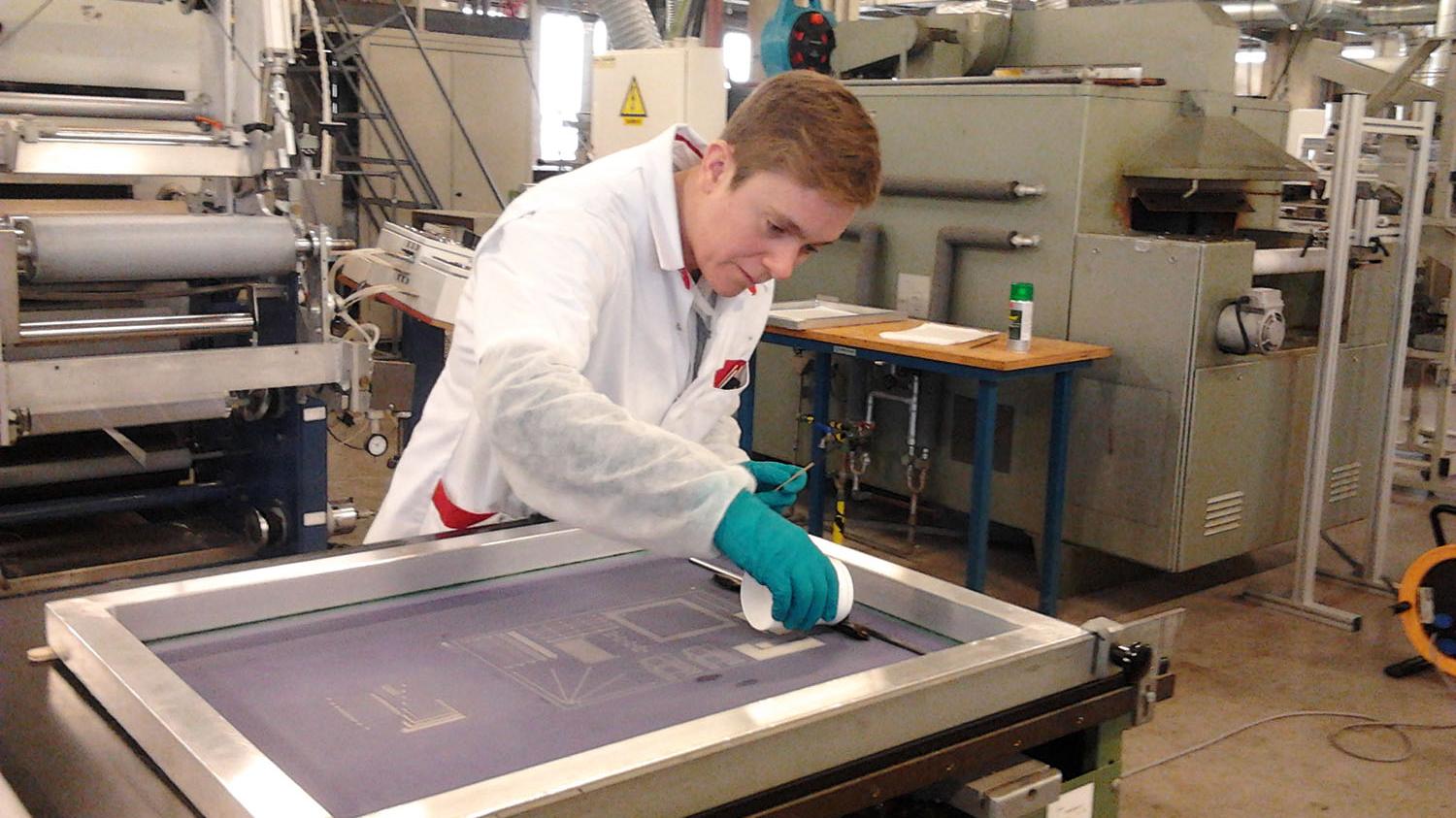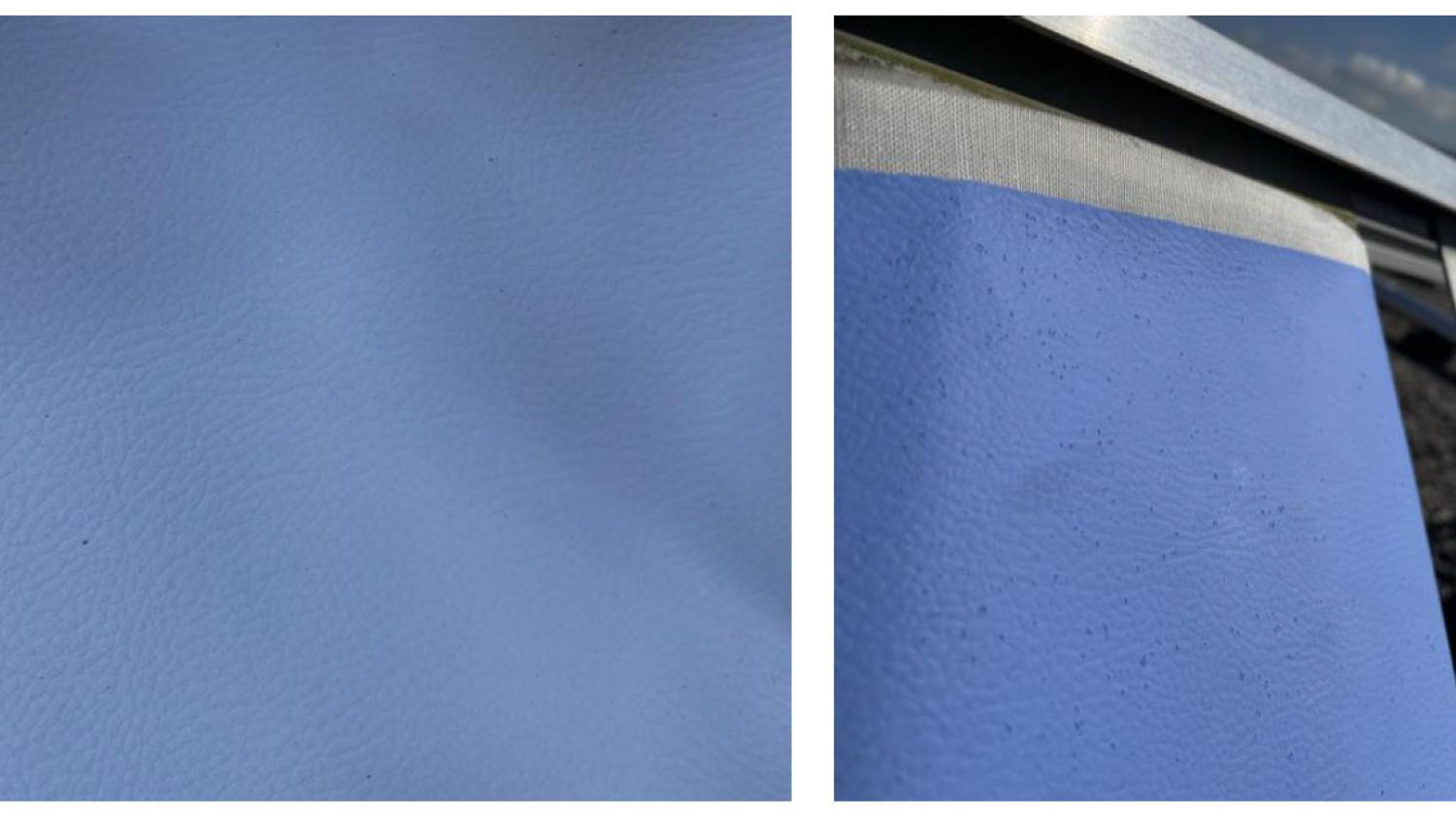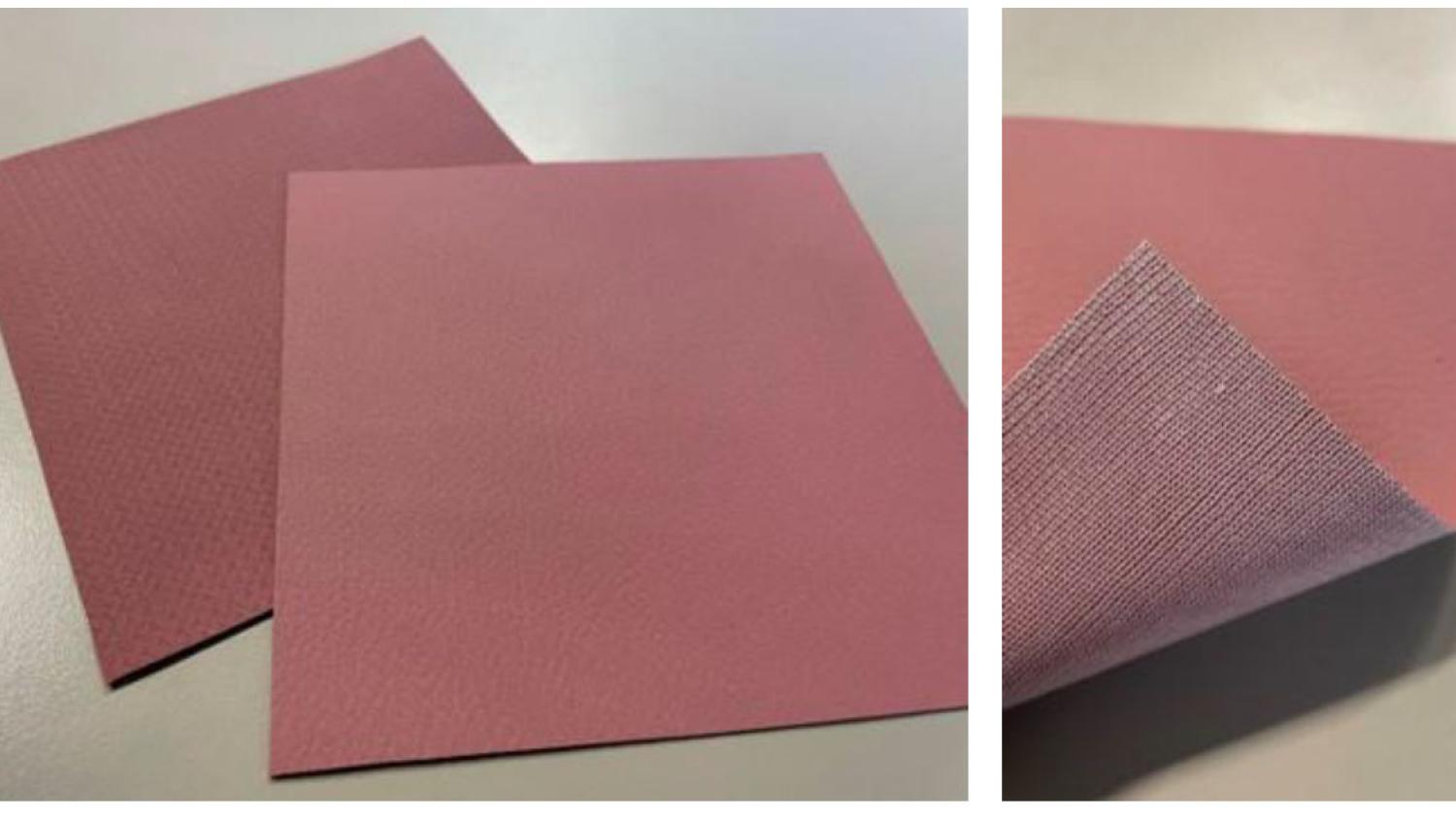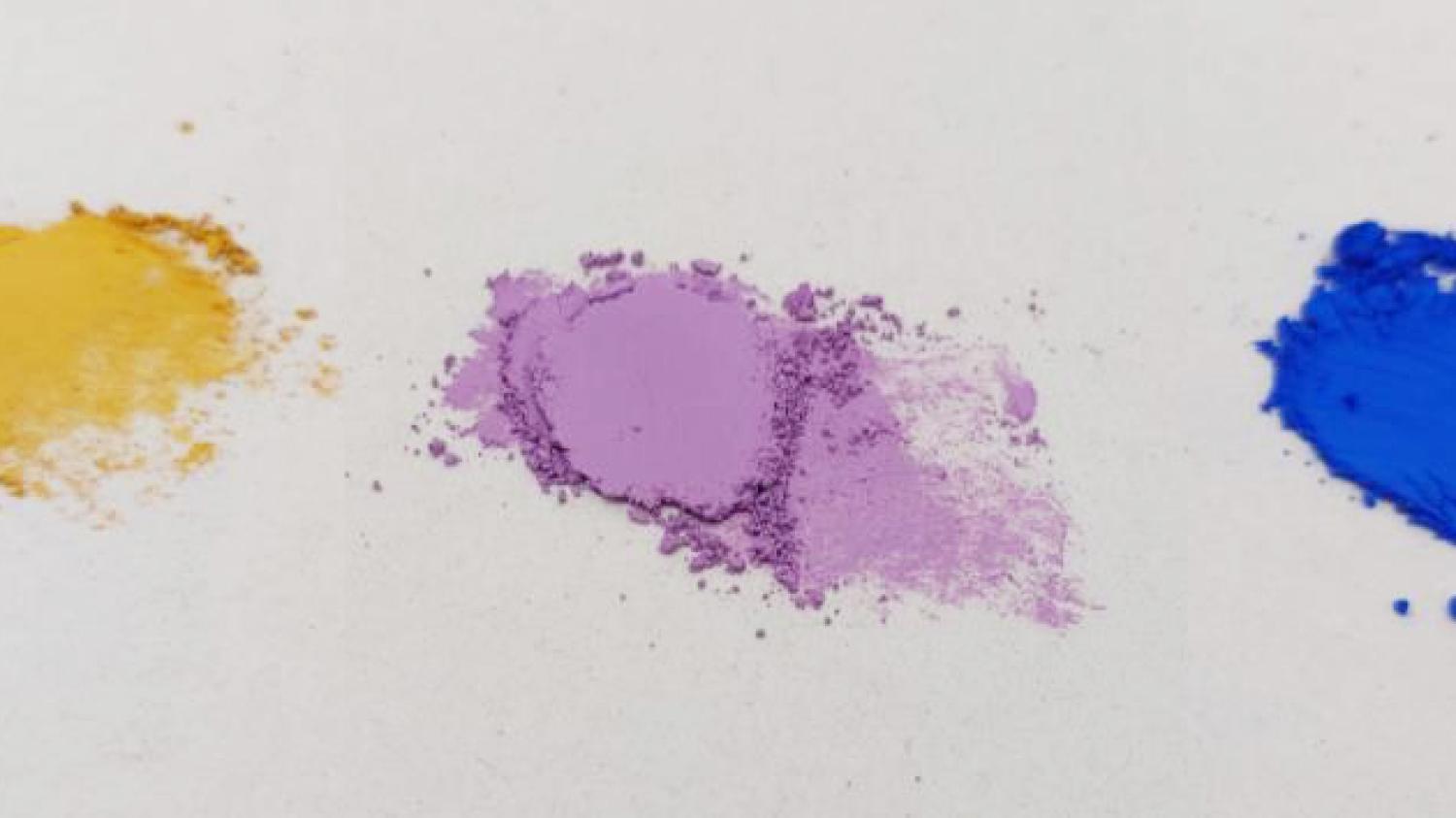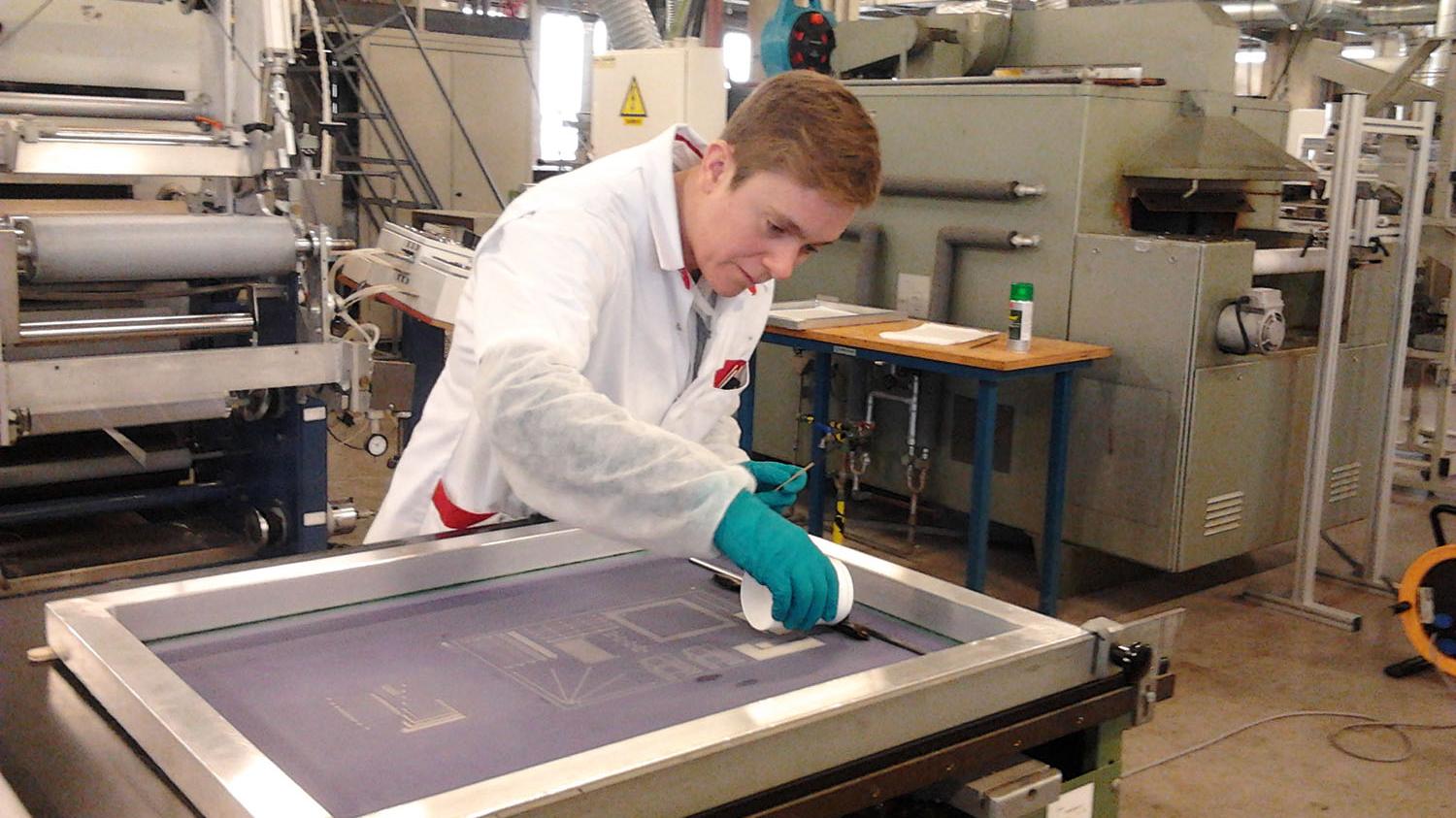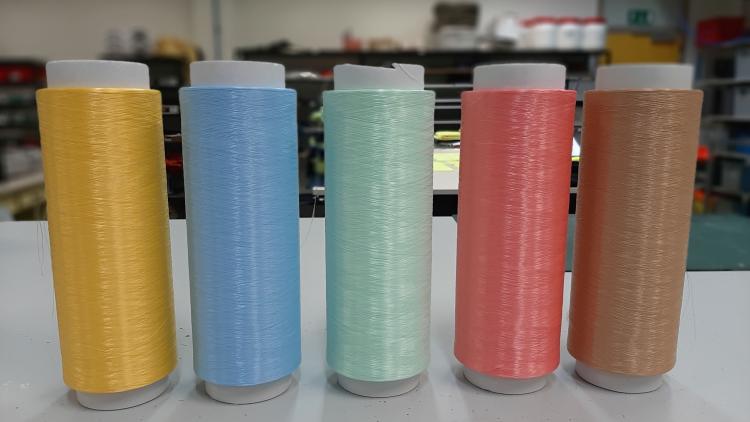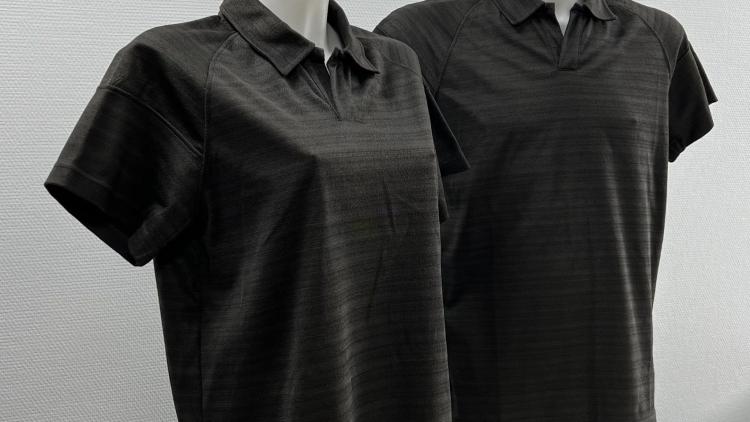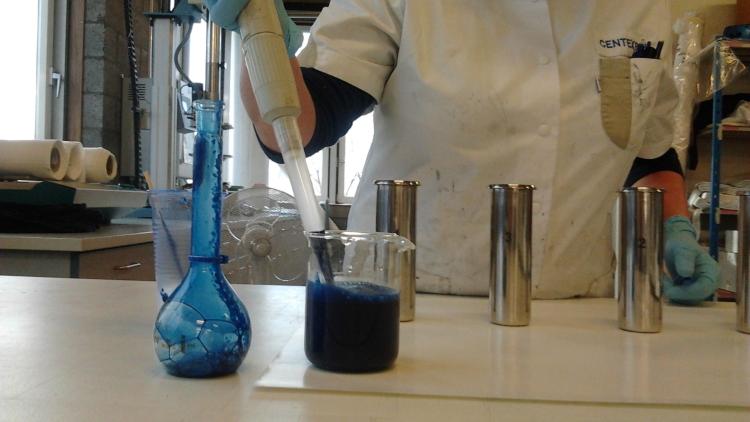Bio-based Coating and Printing
Textile coatings and prints often contain fossil-based polymer binders. In HEREWEAR we tested bio-based alternatives to meet the goal of achieving bio-based, circular and local textiles.
When producing bio-based textiles, the materials used in coatings and prints are just as important as the materials used to make the fibre. Using bio-based coatings and prints means that the textiles industry can be consistent in its efforts to move away from fossil-based resources, and supports eventual recycling or industrial composting.
In this section you can find out about bio-based prints and coatings, how they are different to conventional approaches, and who can help.
What is bio-based printing and coating?
Coating can be described as the application of a continuous layer of polymer or elastomer (as dispersion or molten) on the surface of a fabric, followed by a drying or curing step if required. Coatings produce advanced textile properties such as water resistance or texture, such as in faux leather. Printing is a similar process but instead of a continuous layer, specifically placed droplets are applied on the fabric to form specific designs. bio-based printing and coating aims to attain similar properties to conventional processes with the use of renewable resources.
Why do we need bio-based coatings in textiles?
Conventional Coating and Printing materials include PVC, acrylate or polyurethane. However, these materials are not renewable, are difficult to remove from the fabric (hindering recycling) and shed microplastics, but they are still commonly used due to their superior properties and/or cost.
HEREWEAR aims to provide alternative bio-based coatings and prints for bio-based textiles used in the fashion industry so that the final textile is 100% bio-based.
When producing bio-based textiles, such as biopolyester and man-made cellulosics, bio-based prints and coatings are preferable. In particular in the case of biopolyester, there is an opportunity to make textiles that are entirely composed of Polylactic Acid (PLA) in the fibre and in the coating and printing, which simplifies its eventual recycling.
However, biopolymers such as PLA and PHA must be adapted so that they are suitable for textile applications.
How does bio-based coating work?
Textiles can be coated with a thin layer of a binder with additives to provide properties such as water resistance or to give a textural or aesthetic effect like a faux-leather. This can be done by directly applying the binder to the fabric surface with a blade (knife coating), or by layering the textile with an already dried sheet of coating using a middle layer of binder. The bio-based binders must be selected and combined with additives to achieve optimal properties during the coating process and in finished products.
How does bio-based printing work?
The most common method in textiles is screen printing. This technique uses a mesh through which the ink formulation is pushed onto a textile. By selectively closing parts of this mesh a design can be printed through the remaining openings.
Pigments and dyes are normally mixed into a binder and then applied to the fabric. A key challenge when using biopolymer binders is to achieve an adequate level of fineness and viscosity for the mixture to flow through the screen mesh and adhere to the fabric.
An important note on biodegradation
The preferred end-of-life processing for these materials is not biodegradation but reuse, repair and/or recycling.
Bio-based does not necessarily mean biodegradable, and biodegradability heavily depends on the environment and additives present in the product.
Therefore, biodegradability should be assessed on a product-by-product basis and the biodegradation environment should be carefully considered. For example, bio-based materials degrade differently in the sea, in a river, in home composting, in industrial composting or in landfill.
Coating highlights!
- The bio-based coatings and prints tested are compatible with current industry equipment and techniques.
- Check with partners for more general recommendations
- If coatings or prints with a cooling effect are desired to enhance comfort, then bio-based phase change materials (natural waxes) are an excellent additive that can be included in both coatings and inks. The amount of additive should ideally be between 10% and 30%.
- PHA is a better candidate for artificial leathers thanks to the flexibility, elasticity, and haptics.
- PLA artificial leathers are especially interesting if prepared using PLA for both the coating and carrier fabric as this supports future recycling.
- The supply chain for these materials needs to be developed in Europe.
- The preferred end-of-life processing for these materials is not biodegradation but reuse, repair and/or recycling.
- It is advisable to assess the recyclability before making claims on recyclability of these materials due to the reliance on recycling infrastructure development and availability in the local area.
Printing highlights!
- PLA is the prime candidate for printing inks due to its processing temperature, cost, and availability. Prints were obtained that are wash-fast for at least 15 cycles at 30°C.
- The ink can be coloured either with natural pigments or other commonly used colourants and printed directly to the fabric or by transfer.
- Due to the larger particle size of PLA, the resolution of screens must be lower, which must be considered during print design (screen holes are larger and image more pixelated).
- After printing the ink should be cured at 130°C for 1 minute to fuse the ink binder to the fabric and fix the colourants.
- In the case of direct printing the print ideally receives an additional heat pressing step at 90°C for 30 seconds to improve the wash fastness.
- Lower temperatures and times are needed for printing on PLA. A temperature of at most 130°C for 30 seconds should be used to transfer a print onto PLA or a temperature of at most 1 minute at 130°C if printing occurs directly on PLA.
- Sublimation printing with conventional inks on PLA is possible by decreasing the temperature to 158°C for 40s, resulting in a balance where the fabric is not damaged, but a good quality is achieved.
- Biodegradation of the print and the potential impact of the print on the environment should be assessed.
- The preferred end-of-life processing for these materials is not biodegradation but reuse, repair and/or recycling.

